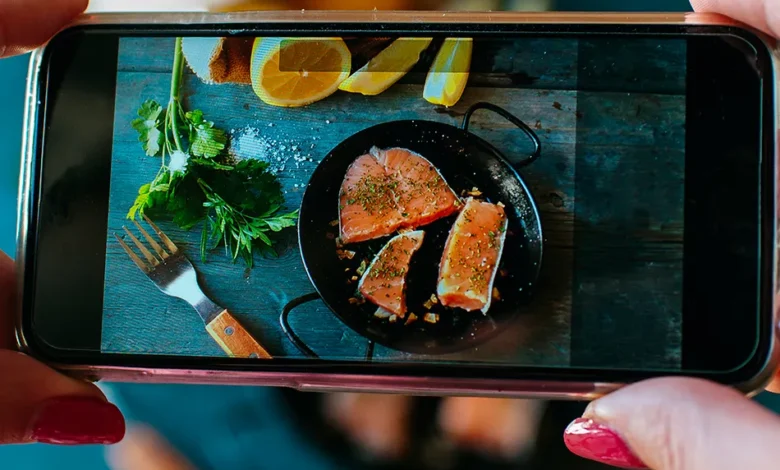Clean Eating Trends on Instagram: The Hidden Impact on Body Satisfaction

In the past decade, Instagram has transformed from a simple photo-sharing app into one of the most influential platforms shaping lifestyle choices, beauty standards, and even what people put on their plates. Among the countless hashtags and health-focused accounts, clean eating trends on Instagram stand out as some of the most powerful. At first glance, they appear harmless—even inspiring. After all, what could be wrong with encouraging people to eat more vegetables, fresh fruits, and whole foods?
But beneath the glossy avocado toast photos and colorful smoothie bowls lies a more complicated reality. While these trends promote healthier food choices on the surface, experts warn they can subtly harm body satisfaction and contribute to unhealthy mindsets around food. For many Instagram users, the line between motivation and pressure becomes dangerously blurred.
The Rise of Clean Eating on Instagram
The concept of “clean eating” exploded in popularity during the mid-2010s, fueled by wellness bloggers, influencers, and celebrity diet gurus. On Instagram, this translated into aesthetically pleasing posts of organic salads, cold-pressed juices, and neatly arranged meal-prep boxes—all tagged with #cleaneating, #eatclean, or #fitlife.
For many, these posts became daily inspiration. The bright, curated images promised a healthier body, glowing skin, and more energy. However, what began as a food philosophy emphasizing minimally processed ingredients quickly evolved into something stricter, almost moralistic. On Instagram, “clean” wasn’t just about health—it became synonymous with “good,” while “unclean” foods like pizza, desserts, or anything processed were subtly framed as “bad.”
How Instagram Shapes Food Culture
One of Instagram’s unique powers is its ability to merge lifestyle content with personal identity. Influencers don’t just share recipes—they often pair their meals with selfies, workout videos, and captions about discipline and willpower. Over time, followers don’t just see a bowl of quinoa salad; they see a representation of success, self-control, and beauty.
The visual nature of the app amplifies this. Unlike text-based platforms, Instagram thrives on perfect pictures. Filters, lighting, and food styling make every dish appear flawless. For someone scrolling late at night, comparing their everyday dinner to a perfectly plated smoothie bowl can stir feelings of inadequacy.
This is where the harm begins. Instead of inspiring balance, clean eating trends on Instagram often push people toward comparison, unrealistic expectations, and guilt over food choices.
The Link Between Clean Eating and Orthorexia
Researchers and health professionals have raised concerns that the obsession with “eating clean” overlaps with orthorexia nervosa, a type of disordered eating characterized by an unhealthy fixation on eating only “pure” foods. While orthorexia is not officially recognized in the DSM-5 (the diagnostic manual for mental health disorders), it is increasingly acknowledged as a growing issue—especially among young people influenced by online diet culture.
Instagram plays a huge role here. Scrolling through dozens of posts that equate clean eating with moral virtue or fitness perfection can reinforce rigid thinking. A slice of birthday cake is no longer a treat; it’s a failure. A burger isn’t just food; it’s “junk” that damages the carefully curated clean lifestyle.
This mindset can chip away at body satisfaction. When food is divided into “good” and “bad,” people may begin to view their bodies in the same binary way: acceptable when eating clean, unacceptable when indulging.
Subtle but Lasting Effects on Body Satisfaction
Unlike extreme dieting fads that openly encourage weight loss, clean eating feels deceptively positive. It hides behind the language of wellness, self-care, and health. But its subtle messaging can be even more dangerous because it goes unnoticed.
Studies suggest that frequent exposure to health-focused Instagram posts correlates with body dissatisfaction and lower self-esteem. The constant emphasis on “clean” living makes users feel they must always be striving for better—clearer skin, leaner muscles, more discipline. It’s a moving target that leaves little room for self-acceptance.
For teens and young adults—the demographic most active on Instagram—this pressure can be especially damaging. At a stage where identity and self-image are still forming, the belief that one must eat perfectly to look good or be accepted can take root deeply.
Influencers and the Business of Clean Eating
It’s important to recognize that behind many of these trends lies an industry. Influencers often monetize their content through sponsored posts, recipe books, or meal plans. Hashtags like #cleaneating or #fitfood are not just lifestyle choices—they’re marketing tools.
This commercial aspect further complicates things. The more followers an influencer gains, the more incentive they have to post flawless, aspirational content. Real-life struggles, moderation, or the occasional indulgence rarely make the grid because they don’t align with the clean, marketable aesthetic.
For followers, this creates a distorted reality. They may believe influencers eat perfectly every day, when in truth, those meals are often staged, styled, or one small part of a much more balanced (and messy) diet.
Stories from Real People
Many people who once followed clean eating trends on Instagram eventually speak out about the harm it caused them. Some share how they developed intense guilt over eating anything processed. Others admit they avoided social gatherings to stick to their “clean” routines, isolating themselves in the process.
Take Anna, a 23-year-old college student, who recalls:
“At first, I loved the motivation. I started cooking more at home, trying new vegetables, and feeling good about eating healthy. But over time, it became all I thought about. If I ate something off-plan, I felt like a failure. Instagram made me feel like everyone else was perfect, and I just couldn’t keep up.”
These personal accounts highlight that while the movement may start with good intentions, it often spirals into stress, anxiety, and self-criticism.
Moving Toward Balance and Awareness
So, what’s the solution? It doesn’t mean we should abandon healthy eating or stop enjoying food inspiration online. Instead, it’s about shifting the narrative from rigid “clean eating” to flexible, balanced nourishment.
Here are a few healthier approaches:
- Follow diverse accounts – Mix your feed with creators who celebrate intuitive eating, body positivity, and cultural food diversity.
- Question the labels – Instead of categorizing food as “clean” or “dirty,” view it in terms of nourishment, enjoyment, and balance.
- Be mindful of comparison – Remember that Instagram is curated. What you see is a highlight reel, not everyday reality.
- Seek professional advice – For personalized health goals, rely on registered dietitians or healthcare providers, not influencers.
Conclusion
Instagram has undeniably reshaped the way people view health and eating. While the colorful posts of smoothie bowls and grain salads can inspire better habits, the underlying messages of clean eating trends on Instagram can subtly harm body satisfaction and mental well-being.
True health is not about perfection but about balance, joy, and flexibility. As users, cultivating awareness of how social media shapes our food choices and body image is the first step in protecting ourselves. The next time you scroll past a perfectly styled acai bowl, take it for what it is—a pretty picture, not a moral judgment on your worth or your body.
